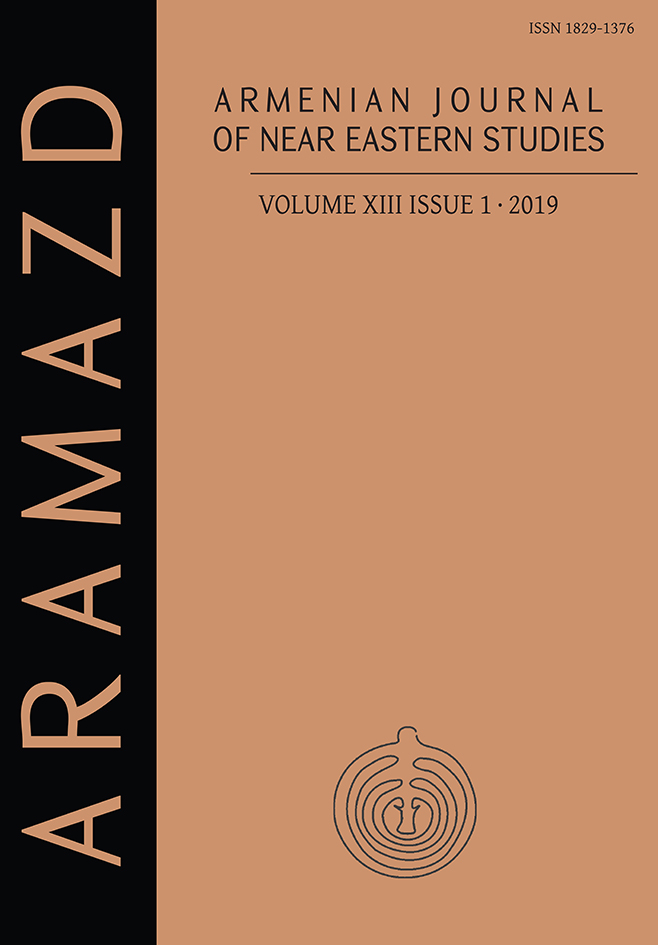Tick remains from Areni-1 (Birds’ Cave, Armenia)
DOI:
https://doi.org/10.32028/ajnes.v13i1.956Keywords:
Archaeozoology, Areni-1 Cave, Armenia, paleopathogeny, tick remainsAbstract
Ticks have never been included in archaeological analytic studies. Here, we present the discovery of a tick from the archaeological excavations at Areni-1 Cave in the Republic of Armenia. The well preserved tick Rhipicephalus bursa provides important information about the prevailing ecology during the periods of habitation and usage of the cave by Medieval inhabitants and supports previous hypotheses, that ticks were a potential source of disease for human and other mammals especially cattle, sheep, horse and dog. This discovery has health, behavioral and ecological implications for the people that occupied the cave.
References
Areshian, G.E., Gasparyan, B., Avetisyan, P., Pinhasi, R., Wilkinson, K., Smith, A., Hovsepyan, R., Zardaryan, D. 2012. The Chalcolithic of the Near East and south-eastern Europe: discoveries and new perspectives from the cave complex Areni-1, Armenia. Antiquity 86: 115-130.
Barnard, H., Dooley, A.N., Areshian, G., Gasparyan, B., Faull, K.F. 2010. Chemical evidence for wine production around 4000 BCE in the Late Chalcolithic Near Eastern highlands. JAS 38: 977-984.
Domingos, A., Antunes, S., Borges, L., and Rosario, V.E. 2013. Approaches towards tick and tick-borne diseases control. Revista da Sociedade Brasileira de Medicina Tropical 46: 265–269. Doi: 10.1590/0037-8682-0014-2012.
Gasparyan, B., Arimura, M. (eds) 2014. Stone Age of Armenia, A Guide-book to the Stone Age Archaeology in the Republic of Armenia. Kanazawa: Centre for Cultural Resource Studies, Kanazawa University.
Harutyunyan, E.S., Dilbaryan, K.P. 2006. Parazitiformnye klešči (Acarina: Parasitiformes Reuter, 1909) Respubliki Armenii i ix značenie v različnyx cenozax (The Parasitiformes Mites (Acarina: Parasitiformes Reuter, 1909) of Republic of Armenia and Their Importance in Various Cenosis). Yerevan (in Russian).
Hoogstraal, H. 1978. Biology of ticks, in: Wilde 1978: 3-14.
Hulme, M., Serrad, N., Markham, A. 1999. Global climate change scenarios. Climatic Research Unit, Norwich, United Kingdom (http://www.cru.uea.ac.uk).
Jongejan, F., Uilenberg, G. 2004. The global importance of ticks. Parasitology 129: 3–14. doi: 10.1017/S0031182004005967.
Kolher, G., Hoffman, G., Janitschke, K., Wie-Senhutter, E. 1967. Studies towards knowledge of the ticks found in Syria. The Journal of Tropical Medicine and Parasitology 18: 375-381.
Krantz, G.W.A. 1978. A Manual of Acarology (2nd ed.). Corvallis.
Le Riche, P.D., Altan, Y., Campbell, J.B., Efstathiou, G.C. 1974. Ticks (Ixodidae) of domestic animals in Cyprus. Bulletin of Entomological Research 64: 53-63.
Motas, C.S. 1903. La piroplasmose ovine « Carceag ». Comptes rendus des séances de la Société de biologie 54: 1522.
Pinhasi, R., Gasparian, B., Areshian, G., Zardaryan, D., Smith, A., Bar-Oz, G., Higham, T. 2010. First Direct Evidence of Chalcolithic Footwear from the Near Eastern Highlands. PLoS One 5 (6) (http://www.Plosone.org/article/info:doi/10.1371/journal.pone. 0010984).
Radovsky, F. 1970. Mites associated with coprolites and mummified human remains in Nevada. Contributions of the University of California Archaeological Research Facility 10: 186-190.
Smith, A., Bagoyan, T., Gabrielyan, I., Gasparyan, B. 2014. Late Chalcolithic and Medieval Archaeobotanical Remains from Areni-1 (Birds’ Cave), Armenia, in: Gasparyan, Arimura 2014: 233-260.
Sonenshine, D.E., Michael Roe, R. 2014. Biology of Ticks. New York, NY.






